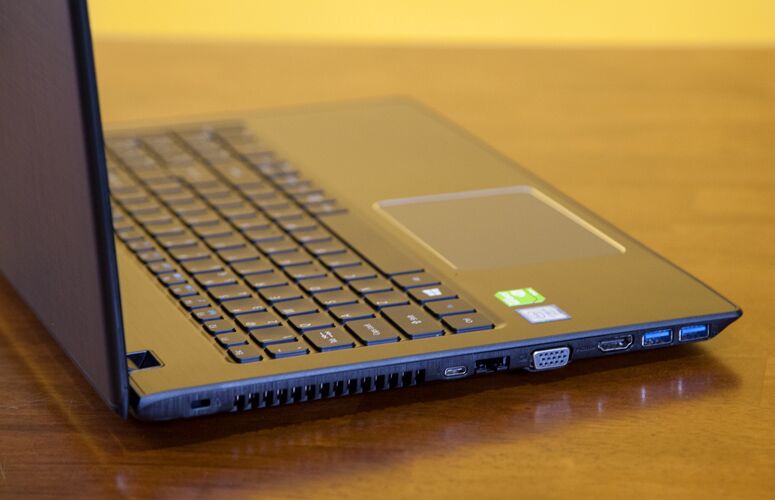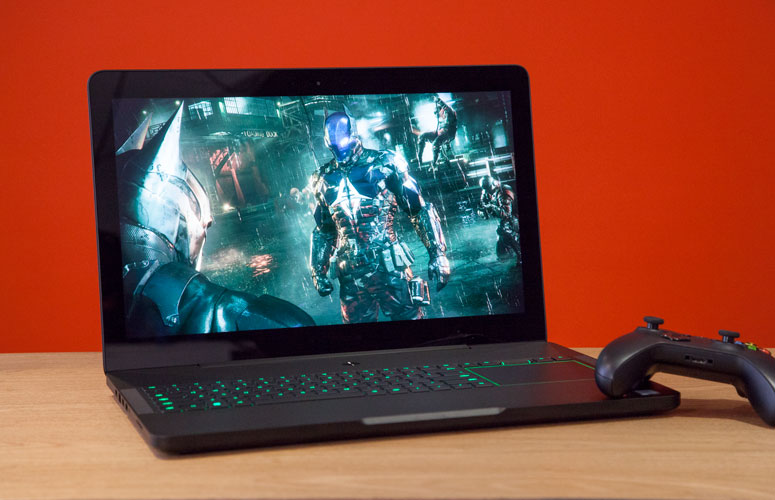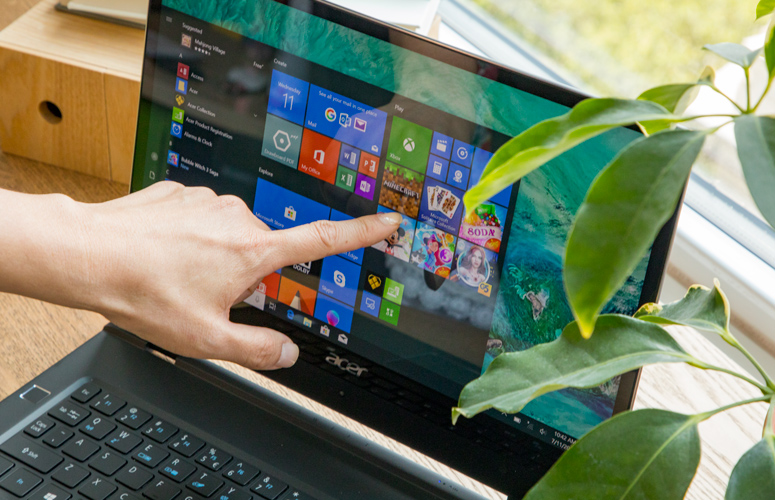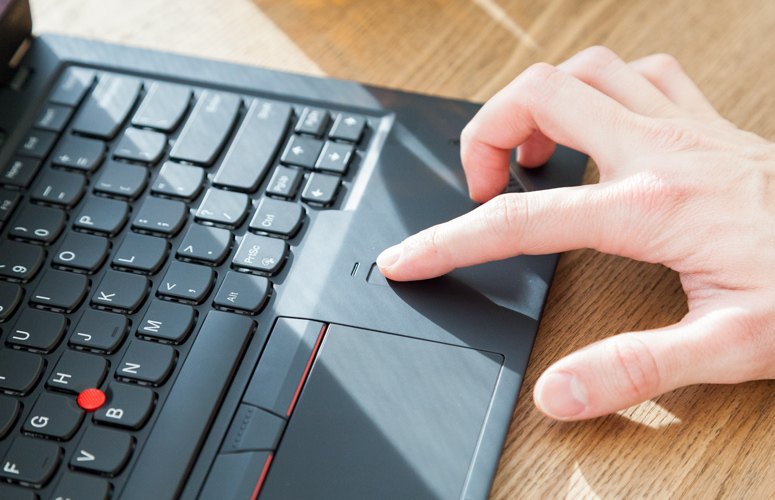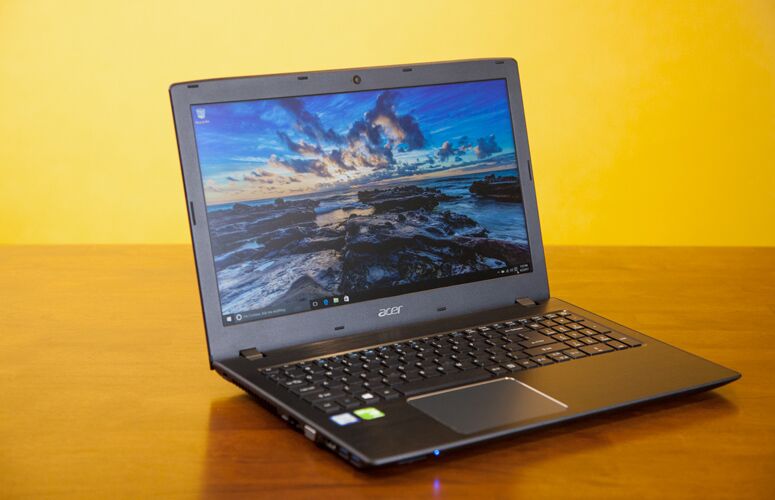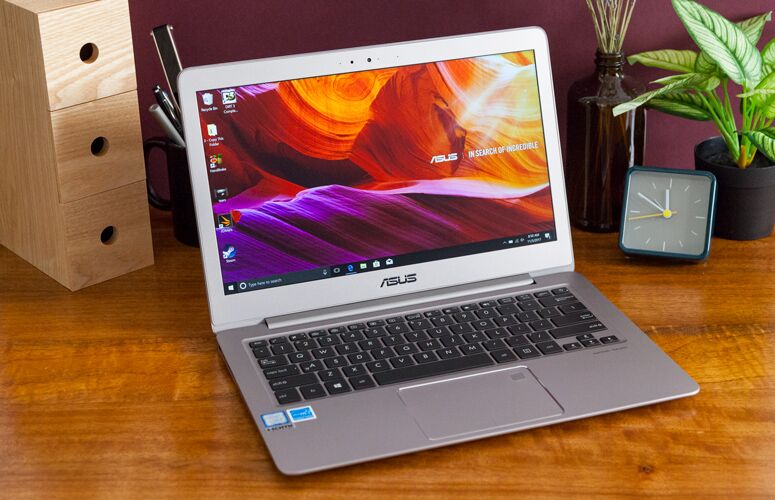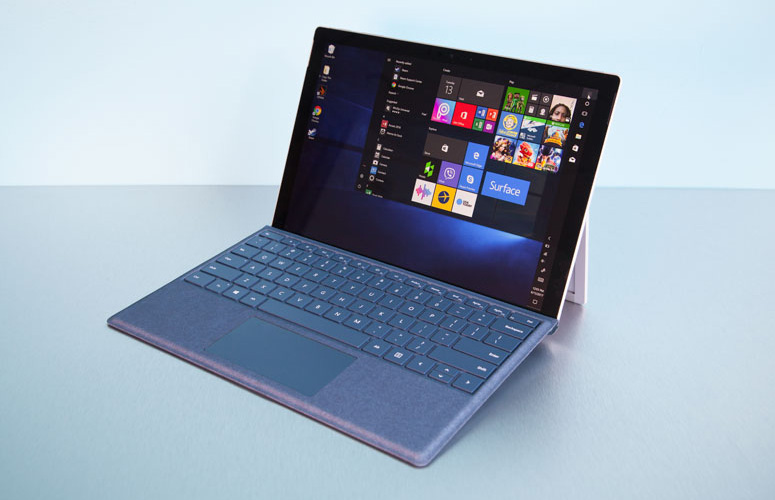Back-to-School Laptop Buying Guide: Come Prepared to Class
If you're a student (or the parent of a student) looking for a laptop for schoolwork, it's crucial you choose a notebook with a comfortable keyboard and enough power to run multiple tasks.
The ideal laptop should be easy to carry around campus and have a beautiful display for bingeing TV shows and movies (after you've finished your homework, of course). The perfect device meets these demanding criteria while fitting within a student's tight budget.
With so many laptop brands to choose from and a laundry list of confusing hardware specs, where do you even start? If you peek off the cheat sheet below, you shouldn't have any problems acing this important assignment.
Quick Tips
- Thirteen- and 14-inch laptops are popular among students because they're portable, tend to weigh less than 4 pounds and have long battery life, while 15- and 17-inch machines are often more powerful, but larger and heavier.
- Students type every day, so it's important you prioritize the keyboard. Look for one with deep key travel (1.5 to 2 millimeters) and a higher required actuation force (at least 60 grams).
- You don't have to spend a fortune to get a good display. In fact, you can find a 1080p panel (our minimum recommended resolution) on a sub-$500 laptop.
- Buy a laptop with at least 8GB of RAM. If you get less than that, your device could start slowing down by your sophomore year.
- When buying an Intel-powered laptop, look for an i-series (i3, i5, i7 or i9) processor. Avoid Celeron and Pentium processors if your budget allows it.
- Don't buy a laptop that skimps on ports. You don't want to carry around dongles or be in a situation where you can't charge your smartphone.
- Consider buying a 2-in-1 system. Laptops with touch screens let you take notes with a stylus, so you can draw graphs, write out complex equations or jot down notes.
How portable do you need it to be?
Display size: 11 to 12 inches
If you're looking for an inexpensive laptop to carry to class every day, you should consider an 11- or 12-inch laptop. They may not be the most powerful notebooks, but they typically last longer than 8 hours on a charge. The downside, of course, is that these devices have very small displays that make it difficult to keep schoolwork organized. Laptops this size are typically equipped with low-power specs, which means they can't handle very big workloads. But if you need a small, lightweight laptop to access the internet and take notes on, they'll get the job done.
Sign up to receive The Snapshot, a free special dispatch from Laptop Mag, in your inbox.
Display size: 13 to 14 inches
The sweet spot for students, 13- and 14-inch laptops have become increasingly popular over the years because of their portability and long battery life. Unless you need to run CPU-intensive programs, these ultraportables provide plenty of oomph for school use. And because they don't have to push as many pixels, the laptops in this category typically last several hours longer on a charge than devices with larger displays. They also have a significantly smaller footprint and weigh between 2 and 4 pounds, so they can be slipped into a backpack and carried around campus.
Display size: 15 inches
Despite losing considerable ground to 13-inch laptops in recent years, laptops with 15-inch displays are still the most popular. These systems typically offer more power and better graphics than smaller laptops, but with a battery-life trade-off. You should expect a 15-inch laptop to weigh between 4 and 6 pounds and last between 6 and 9 hours on a charge. In general, 15-inch laptops are fine for occasional travel, but they're a bit hefty for daily transport.
Display size: 17 to 18 inches
If you don't need to carry your laptop to class and want a device with a large display, consider a machine with a 17- or 18-inch display. Commonly referred to as desktop replacements, these large devices are great for productivity, whether that means working with multiple spreadsheets, coding apps or playing video games in your dorm room. These systems typically weigh more than 6 pounds and have limited battery life.
What ports do you need?
Purchasing a laptop with a variety of ports will save you from carrying around (and inevitably losing) dongles. A USB 3.1 Type-A port is still among the most useful connections to have on a laptop, so you can power wired peripherals like mice, headsets or hard drives.
Newer laptops feature USB Type-C ports for fast charging, and some even have Thunderbolt 3 ports for connecting to multiple displays, attaching to eGPUs, and charging and transferring files at superfast speeds. An HDMI port is also useful for connecting your laptop to a TV, and, of course, make sure you have a headphone jack to listen to music and movies.
Although you'll probably upload your photos from a smartphone to social media, consider buying a laptop with an SD (or microSD) card slot, especially if you're a photographer or filmmaker.
How good does the display need to be?
How much should you spend on a laptop with a good panel? It depends on your major. If you're entering a field that requires you to do photo or video editing, we recommend splurging on a laptop with a high pixel density. Otherwise, you're better off saving money by getting a lower-resolution display.
Here's what to look for in a laptop display:
Resolution: As a rule of thumb, avoid laptops with sub-1080p screen resolutions. The cost of 1080p panels has decreased significantly in recent years. You can now find a laptop with a full-HD screen for a few hundred dollars. If you're a photography, film or art major, consider spending extra on a laptop with a higher-resolution display. Dell, HP and Razer offer QHD or 4K panels on their flagship models.
MORE: Laptop Buying Tips for Students
Glossy versus matte: This is a matter of preference, but there are pros and cons to each type of display finish. Colors tend to pop more on glossy displays, which makes them subjectively more pleasing to look at. However, glossy screens are reflective. The worst ones double as mirrors and distract from your viewing experience. Matte displays may not look as beautiful, but they effectively disperse light and are, therefore, better for use outdoors or under bright lights.
Color gamut:
You won't find color gamut on many spec sheets, but it's an important display metric nonetheless. Color gamut, denoted as a percentage of the color spectrum, is a good indication of how vivid a display is. It's especially important for video or photo editors who require an accurate representation of images. We refer to the sRGB gamut, but some manufacturers might cite Adobe or NTSC.
Even if you're not a photography major, you'll benefit from a display with good color reproduction when you're watching Netflix in your dorm room.
Brightness: You don't want to squint to read text on your display under the bright light of a college classroom. Make sure your laptop has a display that can reach at least 200 nits of brightness. However, a display with a maximum brightness of more than 300 nits is preferred.
Do I need a touch screen? How about a 2-in-1?
Manufacturers have adapted to recent iterations of Windows by adding touch-sensitive displays to their laptops. We don't recommend buying a clamshell laptop with a touch screen — you simply don't gain enough functionality for the hits you take on price, battery life and design. Instead, students should consider 2-in-1s. These convertible laptops are much more versatile and usable than your average laptop because they can fold flat or detach from a base.
Math, science and engineering students can use a touch panel to write out unconventional notes, like complex equations. When you're done taking notes or finishing a slideshow, you can flip the laptop into presentation mode and show your group members.
But there are some trade-offs to consider before buying a 2-in-1 laptop. For one, touch-screen laptops typically have shorter battery life than their nontouch counterparts, and they are slightly more expensive.
What to look for in a keyboard
The keyboard may be an afterthought for some people, but students — especially those majoring in journalism, law, English or computer science — will appreciate a laptop that is comfortable to type on for hours on end. We consider a keyboard with a key travel of 1.5 to 2 millimeters and a required actuation force of at least 60 grams to be ideal.
However, you should take these recommendations with a grain of salt. Ultimately, everyone's preferences are different, which is why, when possible, you should visit an electronics store to test out the keyboard in person.
CPU, GPU and RAM
- Most laptops are powered by Intel processors. When shopping for one, avoid Celeron and Pentium processors, and go with i-series chips, like the Core i3, i5, i7 or i9.
- Make sure your laptop comes with the latest Intel 8th Gen or AMD Ryzen processors. A 1-year-old CPU is OK, but don't buy anything older. Tip: An easy way to determine whether a laptop is new is by looking at the processor version in the system manager.
- Ultraportable laptops come with integrated Intel graphics (GPU). If you're a serious gamer, buy a laptop with a dedicated GPU from Nvidia or AMD.
- Intel processors are the most popular, but don't count out AMD. AMD's latest Ryzen CPUs stand up to 8th Gen Intel processors and offer better graphics performance.
- Unless you're an avid gamer or run GPU-intensive programs, integrated graphics should be powerful enough.
- 8GB of RAM is a minimum requirement; anything more is icing on the cake. If you cheap out and go with 4GB of RAM, expect your device to slow down when running multiple tasks.
Storage: SSD vs. HDD
Choosing between a solid state drive (SSD) and a hard disk drive (HDD) is a matter of speed versus space. SSDs are significantly faster than traditional HDDs, but they don't offer as much storage for the price. If you can afford it, we strongly recommend purchasing a laptop with at least a 256GB SSD. It will offer significantly better performance than a laptop with an HDD. If you're worried about running out of space to put your photos and documents, consider uploading files and photos to the cloud or buying an external hard drive.
MORE: The Best Laptops for Business and Productivity
If you're on a tight budget, a laptop with a low-capacity eMMC hard drive or HDD might be your only option. eMMC storage is fast, but it's typically offered only in 32GB or 64GB capacities. The advantage of a traditional hard drive is that it offers significantly more storage space — typically 750GB or 1TB — for the price. An important spec you should consider before buying a laptop with an HDD is how fast it spins. We strongly recommend 7,200-rpm HDDs over 5,400-rpm HDDs.
Windows vs. macOS vs. Chrome OS
Most laptops come with one of three vastly different operating systems: Windows, macOS or Chrome OS. Your OS choice will dictate your experiences going forward.
If you go with Windows 10, the latest version of Microsoft's desktop OS, you'll have more laptops to choose from and greater flexibility than what macOS or Chrome OS offer. Windows laptops range from $100 to several thousands of dollars and offer touch-sensitive displays, 2-in-1 designs and dual graphics cards. Most external peripherals — mice, mechanical keyboards and headphones — and software are compatible with Windows.
macOS has much of the same functionality as Windows 10 but with a different interface and features. Instead of Cortana, macOS' digital assistant is Siri. And it trades a Start menu and taskbar for an apps dock. If you already own an iPhone, you'll enjoy seamless integration with macOS, since the desktop operating system is a key part of Apple's ecosystem. MacBooks are the only laptops that run macOS, so you don't have many choices. Those you do have are great, but they're very expensive.
Chromebooks — laptops that run Google's Chrome OS — are typically inexpensive. Centered around the Chrome browser, Chrome OS is simple to use, but it's more limited than Windows or macOS. For example, Chrome OS relies heavily on its web browser and Android apps, and doesn't support as many file types as Windows. Chromebooks are especially popular in schools for their low price, usability and long battery life. If you're an Android user, you'll benefit from tight integration between Google's mobile and desktop operating systems.
Budget
Budgeting for a laptop is tricky for anyone, but it's especially crucial for students who don't have jobs or are getting paid intern wages. If you know what you're looking for, you shouldn't have any problems finding a laptop that suits your needs — and your budget.
Under $400
This price range is dominated by 11-inch laptops that run Windows or Google's Chrome OS. You'll occasionally find a laptop with a 1080p display, like the excellent Acer Aspire E 15 or Asus VivoBook E403NA, but the prevailing display resolution is a lowly 1366 x 768. These laptops have low-end processors, slow hard drives and a shortage of RAM. Therefore, they are best suited for less-demanding tasks, like browsing the web or word processing. You'll also need to compromise on build quality, as most, though not all, sub-$400 laptops are chunky and made of plastic.
$400 to $700
The low end of the mainstream category, laptops in this price range are a big step up from budget options. Standout laptops that cost more than $400 come with a 1080p resolution display. At the higher end of the price range, you'll find notebooks with Core i5 processors, large storage capacities and at least 8GB of RAM. These laptops are capable of running everyday tasks, like browsing the web, playing videos and powering most programs. Don't expect a premium design, however, as most sub-$700 laptops are made of plastic.
$700 to $1,000
While they aren't typically the sleekest or sexiest, laptops that cost between $700 and $1,000 offer very strong performance and excellent displays. At this price, there is no reason to purchase a laptop with a display resolution below 1080p. Core i5 processors, SSD storage and 8GB of RAM are other desired components to look for.
A favorite at the low end of this category is the Asus ZenBook UX330UA, which has a 1080p display, a Core i5 processor and a 256GB SSD for $750. The base model Dell XPS 13 — our current favorite overall laptop — is also in this price range, but you'll need to make some compromises on specs.
$1,000+
Laptops in this price range offer strong performance and a premium design. Unless a laptop has military-grade durability, accept nothing less than premium metal finishes. If you're going to spend this much, make sure the laptop has at least a 1080p display, a Core i5 processor and 8GB of RAM. If you have a flexible budget, opt for a 4K display, a Core i7 processor, 16GB of RAM and a 512GB SSD.
Dell XPS, Lenovo ThinkPad/Yoga, Microsoft Surface, HP Spectre and Apple MacBook are popular flagship laptop lines in this price range.
Choosing a Brand
Another important choice students will need to make when purchasing a laptop is deciding on a brand. You'll want to buy from a company that makes reliable products, has strong tech support and offers generous warranties.
If that sounds daunting, don't worry. We've done the hard work for you by examining the major U.S. laptop brands and scoring them based on the quality of their laptops, their support and warranty, and the value and selection they offer. Here are the Best and Worst Brands of 2018.
We also went undercover to determine which laptop manufacturer had the best customer service. Here are the results of our latest Tech Support Showdown.
Credit: Laptop Mag
Phillip Tracy is the assistant managing editor at Laptop Mag where he reviews laptops, phones and other gadgets while covering the latest industry news. After graduating with a journalism degree from the University of Texas at Austin, Phillip became a tech reporter at the Daily Dot. There, he wrote reviews for a range of gadgets and covered everything from social media trends to cybersecurity. Prior to that, he wrote for RCR Wireless News covering 5G and IoT. When he's not tinkering with devices, you can find Phillip playing video games, reading, traveling or watching soccer.

